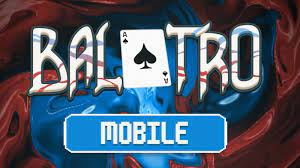
The Joker card, often characterized by its whimsical design and vibrant colors, serves as a unique and versatile element in various card games and cultural references. While its role may vary depending on the context, the check jokercard balance consistently embodies themes of unpredictability, creativity, and, at times, chaos.
Origins and Evolution
The Joker card has its roots in the 19th century, emerging in the United States as a trump card for the game of Euchre. Initially referred to as the “best bower,” it was designed to represent the highest-ranking card in the game. As card games evolved, so did the Joker’s role. It gradually became a staple in many other games, such as Poker and Rummy, often taking on a more playful persona.
Design and Representation
The Joker is typically depicted as a jester or clown, symbolizing folly and humor. Its design can vary significantly between different decks, with some featuring elaborate costumes, mischievous expressions, and colorful patterns. In many decks, the Joker is accompanied by symbols of trickery, such as bells or juggling props, reinforcing its association with entertainment and surprise.
The Joker in Games
In gaming contexts, the Joker serves various functions:
- Wild Card: In many games, the Joker acts as a wild card, allowing players to substitute it for any other card to create stronger combinations. This ability to adapt and change forms reflects the unpredictable nature of the Joker itself.
- Trump Card: In games like Euchre, the Joker may function as a trump card, giving players an advantage over their opponents. This use emphasizes the strategic importance of the Joker in gameplay.
- Unique Rules: Some games introduce specific rules for the Joker, such as drawing extra cards or affecting scoring. These unique mechanics often heighten the excitement and unpredictability of the game.
The Joker Beyond Gaming
The Joker’s influence extends beyond the realm of card games, permeating various aspects of culture, literature, and media:
- Literary Symbol: In literature, the Joker often represents the unpredictable nature of life. It serves as a reminder that not everything can be controlled and that chaos can lead to unexpected outcomes.
- Film and Television: The Joker has become an iconic character in popular culture, particularly in the context of the Batman franchise. The character embodies the duality of humor and villainy, reflecting societal fears and the darker aspects of human nature.
- Art and Design: The Joker’s visual appeal has inspired numerous artists and designers, leading to various interpretations across different mediums. From classic illustrations to modern graphic design, the Joker remains a compelling figure in art.
Conclusion
The Joker card, with its playful and unpredictable nature, transcends its role in card games to become a powerful symbol in various cultural contexts. Its ability to adapt and change forms makes it a fascinating subject of study, reflecting the complexities of life and human nature. Whether as a wild card in a game or a character in a story, the Joker continues to captivate and intrigue, reminding us of the joy and chaos that exists in both play and reality.
